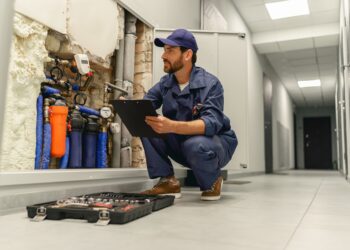POTUS unveiled new guidelines meant to help states loosen their social distancing restrictions.
On Thursday, April 16th, President Donald Trump released Opening Up America Again, a framework to help states ease lockdown restrictions, saying to governors of each state through a telephone call that it is their decision on when and how to reopen, differing from his earlier claim that “the President of the United States calls the shots” in how to ease restrictions that have kept most Americans indoors and forced closures of schools, restaurants, gyms and other businesses.
White House coronavirus response coordinator Deborah Birx explained this three-phase plan where “all vulnerable individuals” stay home and employees return to work gradually. To enter each phase, CNN reports, states have to meet “gating” thresholds that may be declining documented cases or a decreasing percentage of positive tests. These guidelines, meant to speed Trump’s goal of restarting the country, won’t be mandatory. Many governors like Cuomo in New York have already extended restrictions into May or banded into regional collectives that will determine their own reopening plans. These phases will be divided as follows:
- Phase 1: A limited group of businesses like restaurants and movie theaters are allowed to reopen while schools remain closed and vulnerable people stay home.
- Phase 2: Schools can reopen and non-essential travel can resume. Phases two and three gradually decrease the recommended social restrictions.
- Phase 3: Vulnerable people can resume public interactions while practicing social distancing.
Trump said it is the governors’ responsibility to improve testing in their state, shrugging off responsibility for enacting the type of nationwide testing system he was touting in the past, where he said that he had “total authority” over when to reopen. Now he’s deferring to governors, showing that the pandemic requires locally tailored responses. But even among the nine states with the lowest case counts — Maine, Vermont, West Virginia, Nebraska, North Dakota, Montana, Wyoming, Alaska and Hawaii — not all governors have expressed an eagerness to quickly reopen.
You can visit the POTUS guidelines here.
There’s a major issue: testing
According to Morning Brew, public health officials, lawmakers, and business leaders are concerned the U.S. can’t test people at the scale necessary to responsibly send us back to work.
- In the entirety of the crisis, the U.S. has conducted nearly 3.5 million tests. Experts say we need to test millions per week before we get back to working IRL in any significant capacity.
- If the U.S. eases restrictions too early, medical authorities say, it risks spurring a second wave of infections that overwhelms the healthcare system. In fact, a second wave of COVID-19 infections is hitting northern Japan right now.












